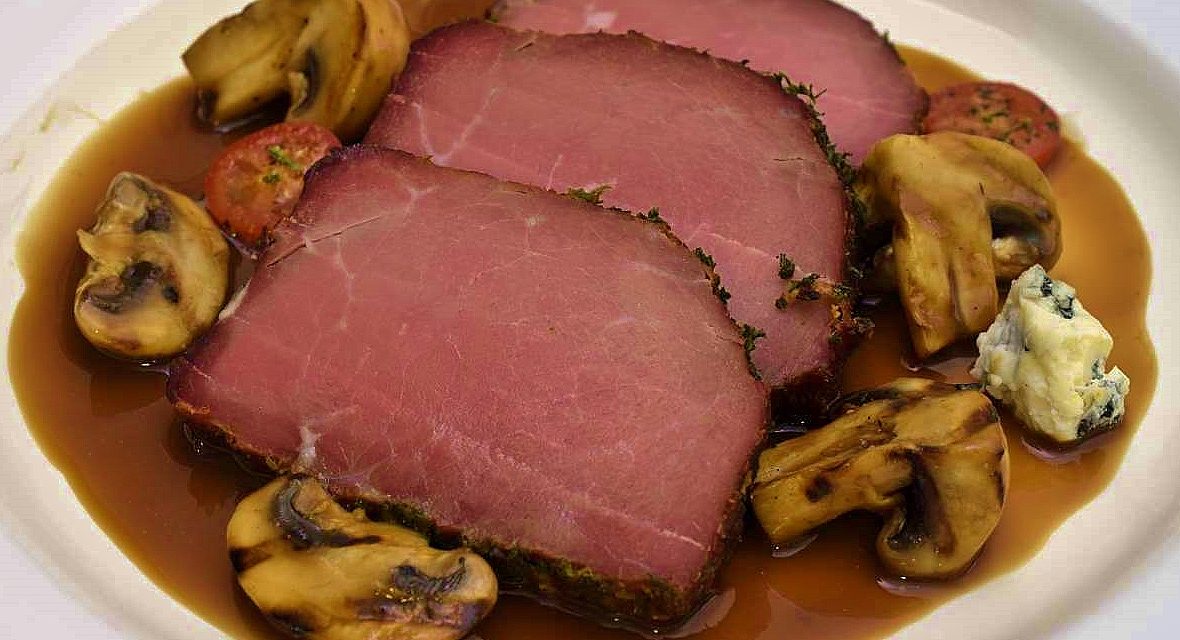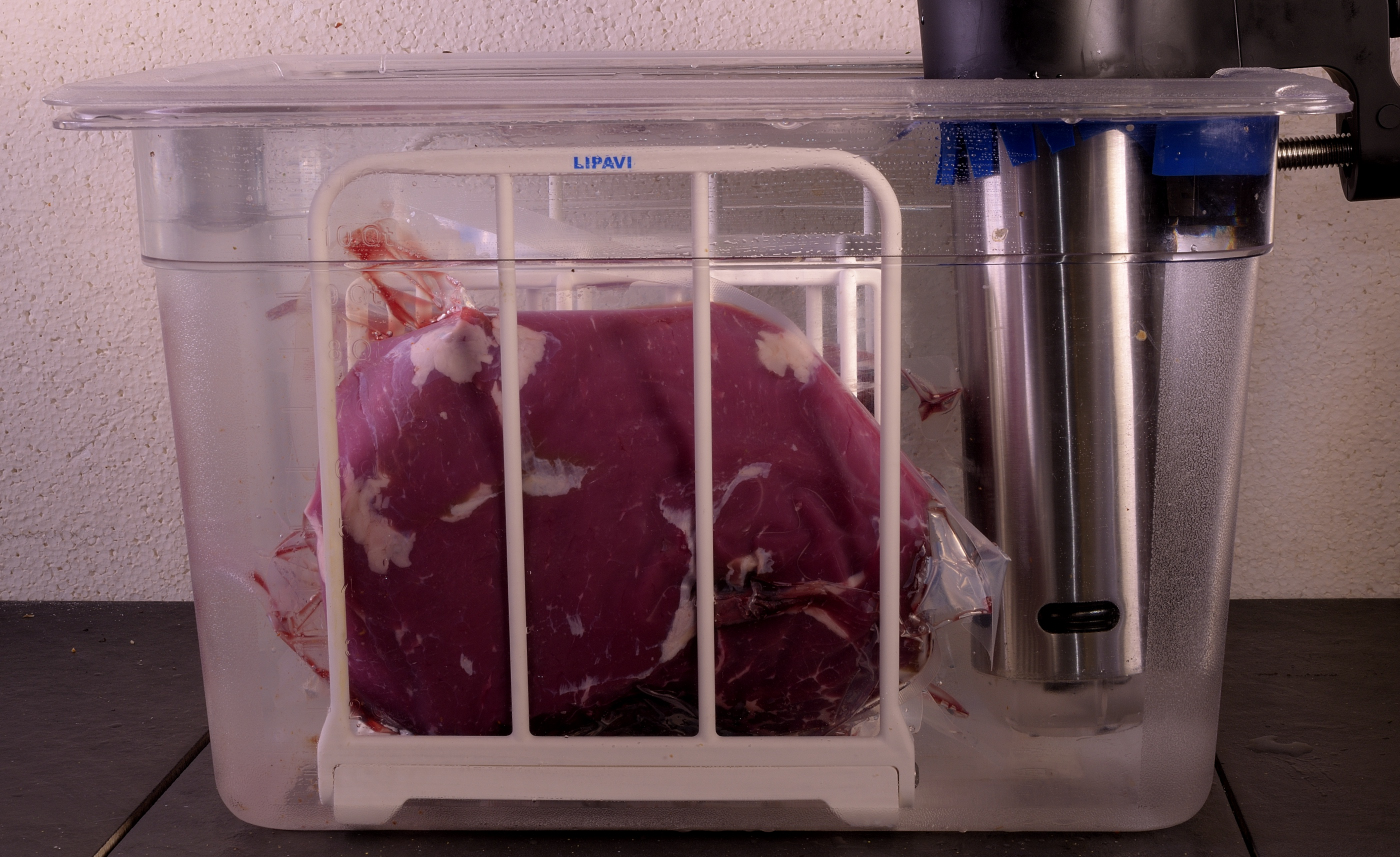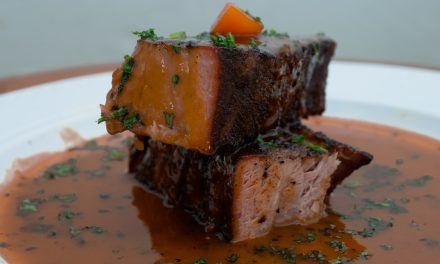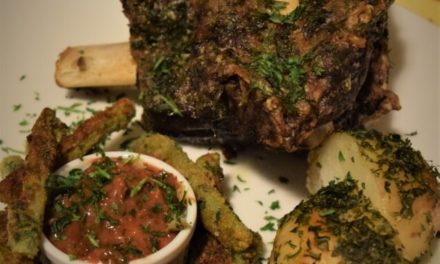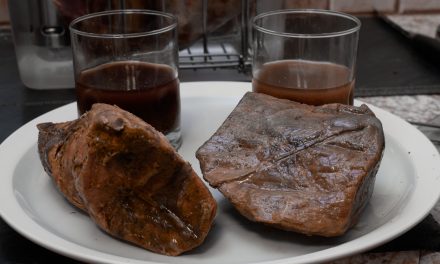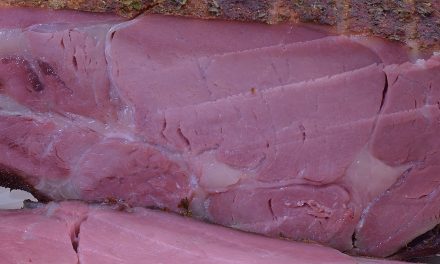You can do this!
Where to begin?
For the purposes of this demonstration, we started with a well trimmed top sirloin center cut roast that weighed approximately 2 lb/1 Kg. The same recipe/method can be applied to top sirloin roasts and/or large steaks ranging in size anywhere from 1 lb/450 g to 4+ lb/2 Kg. The time/temperature parameters utilized are:
- Sous vide: 130 F/54 C for 8-12 hours and then cold shocked to 40 F/4 C. If you prefer your beef cooked to a greater degree of apparent doneness, refer to the guidelines outlined HERE.
- Pellet grill smoked from a cold start at 180 F/83 C for 2-4 hours.
- Seared in a 450 F/232 C cast iron skillet broiler pan until desired appearance achieved, approximately 1-2 minutes per each side.
This treatment integrates sous vide processing/pasteurization, low temperature hot smoking and cast iron grilling to create a unique effect. We also demonstrate how to apply a flavorful and durable crust to the roast and/or steaks, discussed in detail HERE.
Those who are interested in self-customizing their cut and realizing considerable cash savings should read the article You don’t have to be a butcher. This explains how easy it is to break down the whole top sirloin primal cut. It also liberates the enthusiast from dependence on what are usually limited and hastily pre-cut top sirloin roasts and steaks offered in the butcher’s case at the market.
And they’re off!

This is a well trimmed, 2 lb/1 Kg center cut top sirloin roast. Vacuum seal in a heat rated sous vide pouch and process at
130 F/54 C for 8-12 hours
Time determines tenderness, but time cannot be used to MEASURE tenderness. Rather than use a specified interval, the tenderness of the cut is measured by using the method described HERE. You may be new to this method or lacking in confidence. If so, I recommend you practice the technique on your roast or steak after 8 hours. This will serve to familiarize yourself with the method.
Regardless of your determination, 12 hours or even 16 will not affect the roast in any detrimental way because of the precise temperatures applied–it is extremely difficult to “overcook” using sous vide processing in this temperature range.
Safety
After processing, the roast is fully pasteurized. Shock the package in iced water until it achieves 70 F/21 C, and then refrigerate to 40 F/4 C. Do not put the hot package in the refrigerator–home refrigeration equipment is not designed to or capable of chilling hot foods in a safe period of time. Putting the hot package in the refrigerator also puts other foods in the vicinity at risk. In this preserved state, the roast can be refrigerated at 40 F/4 C for at least two weeks before either proceeding to the next step or utilizing in another application.
After intermission
Dip the chilled package in hot water (or a functioning sous vide bath) for five minutes to dissolve the gel. Cut a hole in the end of the package and harvest the juices as explained in the article What to do with those juices. Use the article entitled Post processing seasonings and rubs to build the crust on your roast. The rub recipe used in this article is a new one called Umami seasoning #12 and 35.
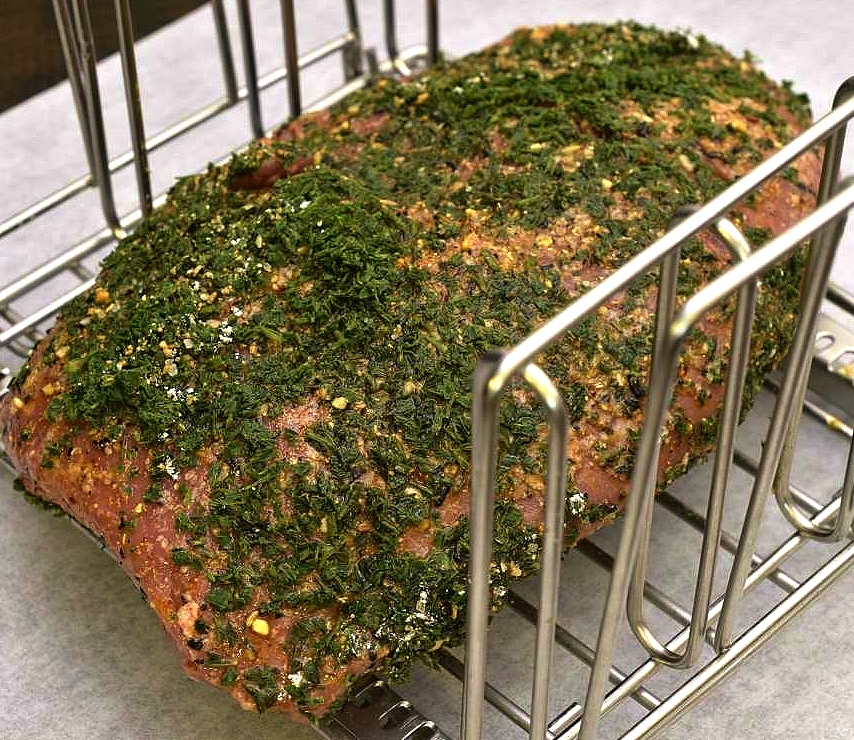
I use a cold start for outdoor smoking to limit my exposure to toxic gases. A Lipavi rack serves for transport and processing to and from the smoker, which I set at the lowest setting of 180 F/83 C. Unlike most tender cuts, top sirloin is high in myoglobin and resistant to overcooking. A top sirloin roast of this thickness can stay in the smoker for four hours without becoming discolored.
If you do not have access to an outdoor smoker, you can use a generic kitchen oven and still get excellent results. Most ovens can be set as low as 225 F/107 C, in which case the roasting process will most likely go somewhat faster–usually 1-2 hours.
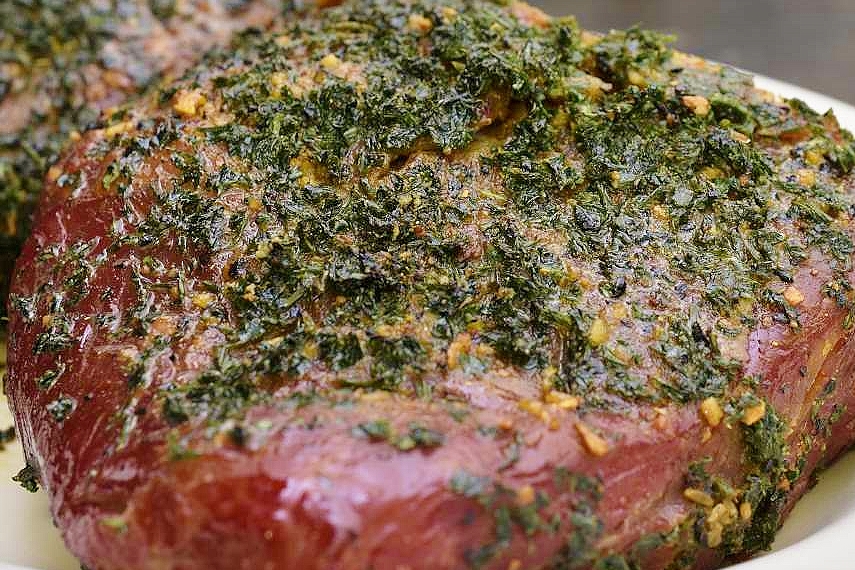
In either case, use a probe thermometer to make sure that the internal temperature of the pasteurized roast achieves at least 125 F/52 C.
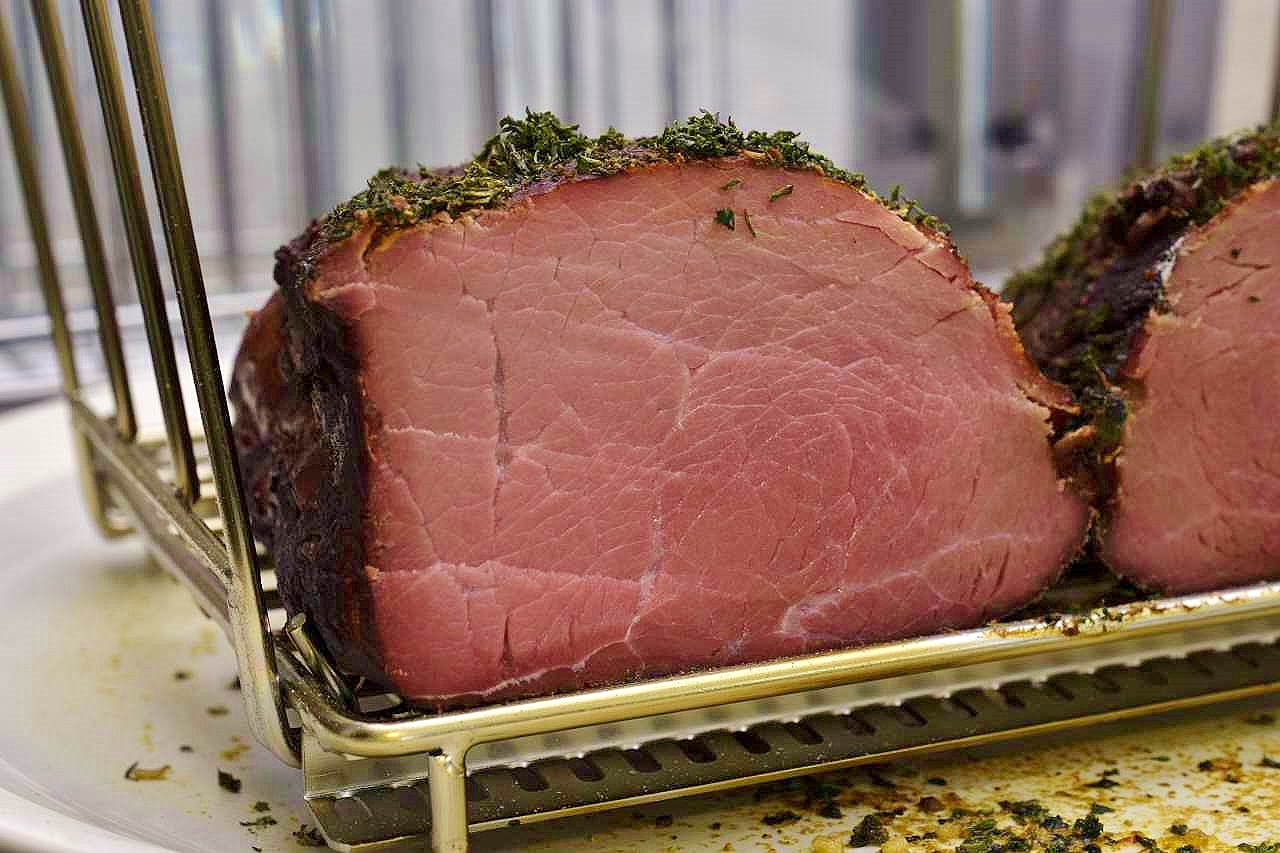
Above and below: in the pellet smoker, 180 F/83 C for 5 hours.
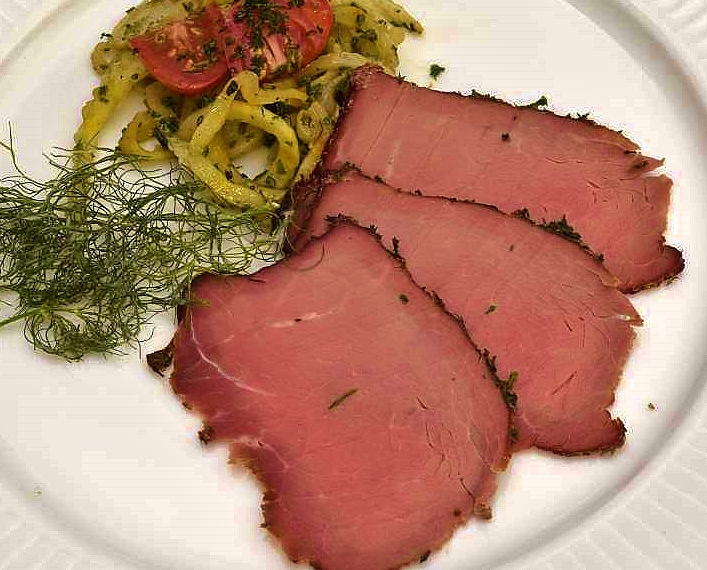
If desired, the roast can be sliced thin and served in this state, “London Broil” style.
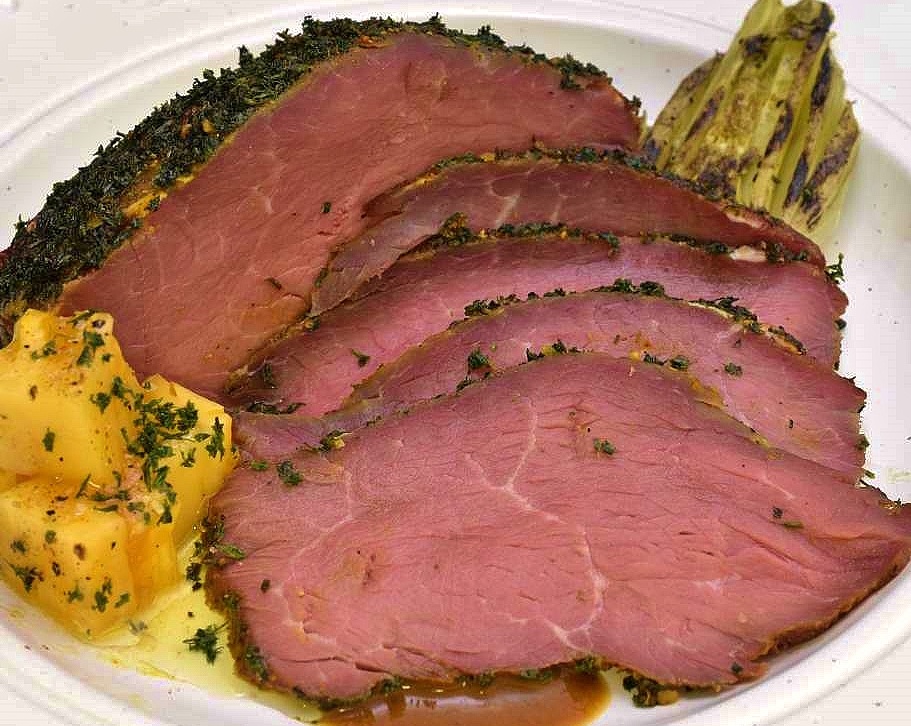
This is the result of the combination of sous vide processing, low temperature smoking and the somewhat unique characteristics of beef top sirloin. However, another step can be taken to create an even more striking visual effect.
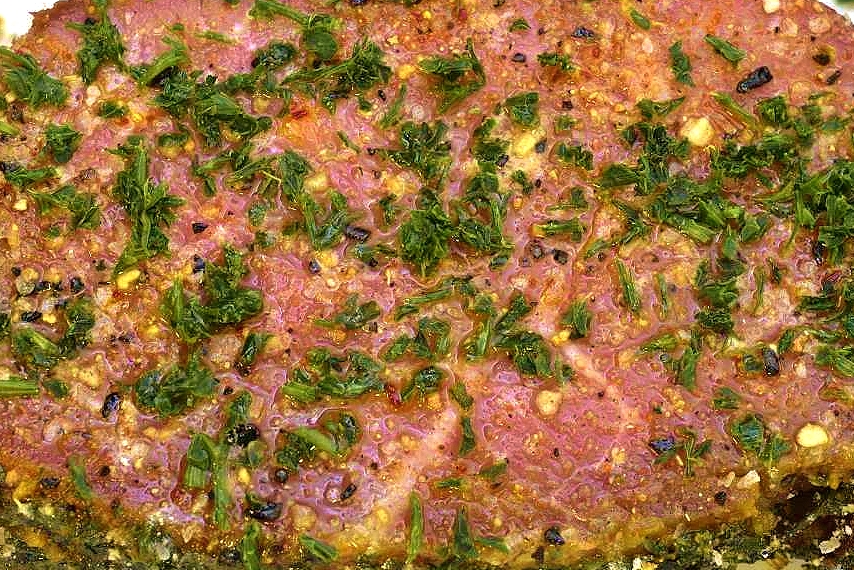
Cut an 8 oz/225 g steak from the roast and use the seasoning process described HERE again.
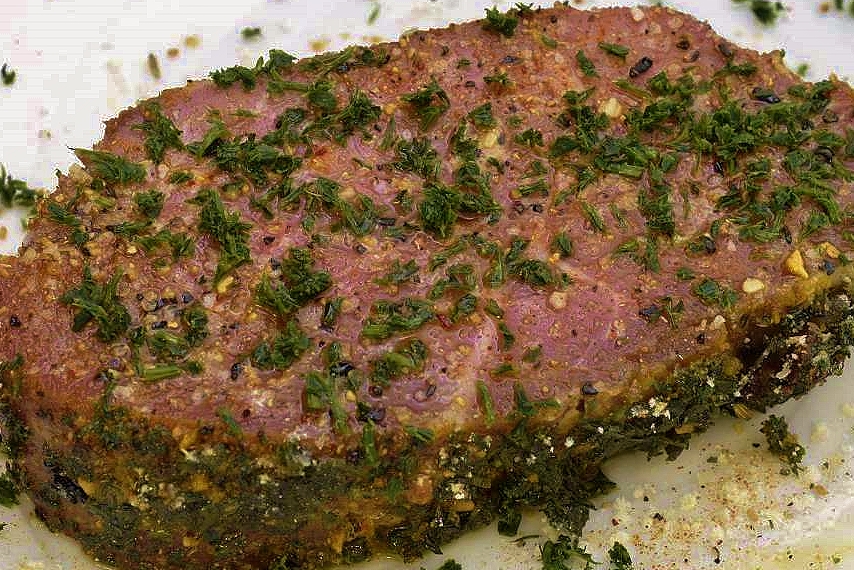
Preheat a cast iron skillet or saute pan to 450 F /232 C. Use a paper towel dipped in oil (or aerosol spray release) to coat the grates of the pan and sear the steak on both sides until the desired appearance is achieved. If the steak is “hot out of the smoker” this process will take no more than a minute on each side.
If the steak is “cold out of the refrigerator,” treat as raw and use your own judgement and a probe thermometer to confirm the internal temperature of 125 F/52 C or above.
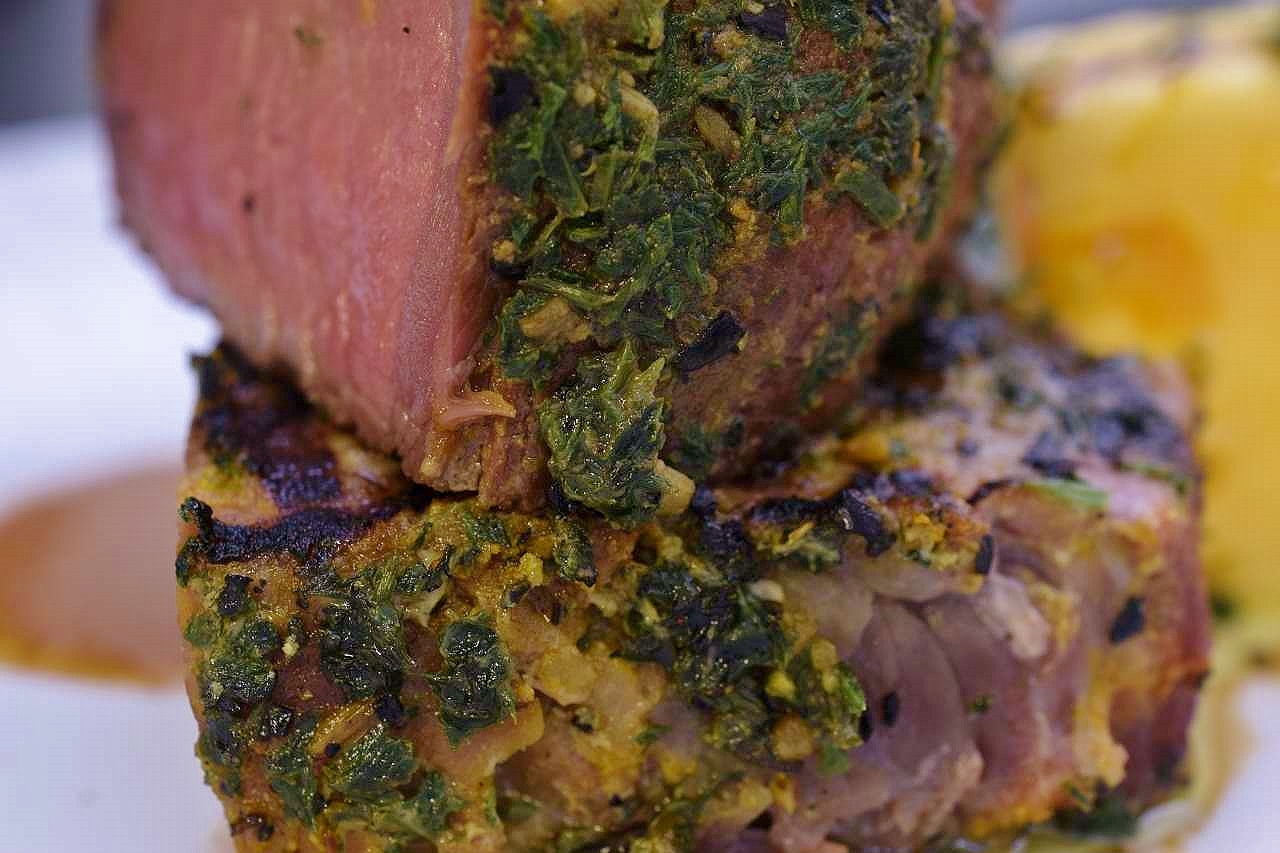
Even with the searing process being applied to the individual steak, the coloring is retained. The fact that sous vide was originally used assures retention of moisture that is extremely difficult and unreliable using other means of cooking.
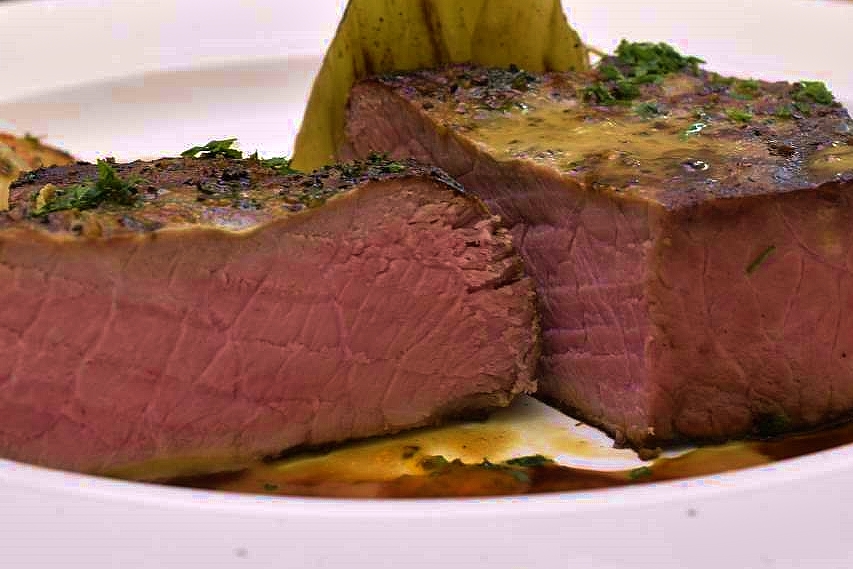
See how to make the sauce HERE
Presentation
Presenting your labor of love impressively need not be painstaking. You do not need to be a trained or even intuitive artist. I always take seasonal availability of vegetables and other ingredients into account. Beyond that, less is more and a clean and ample border achieves desirable appearance.
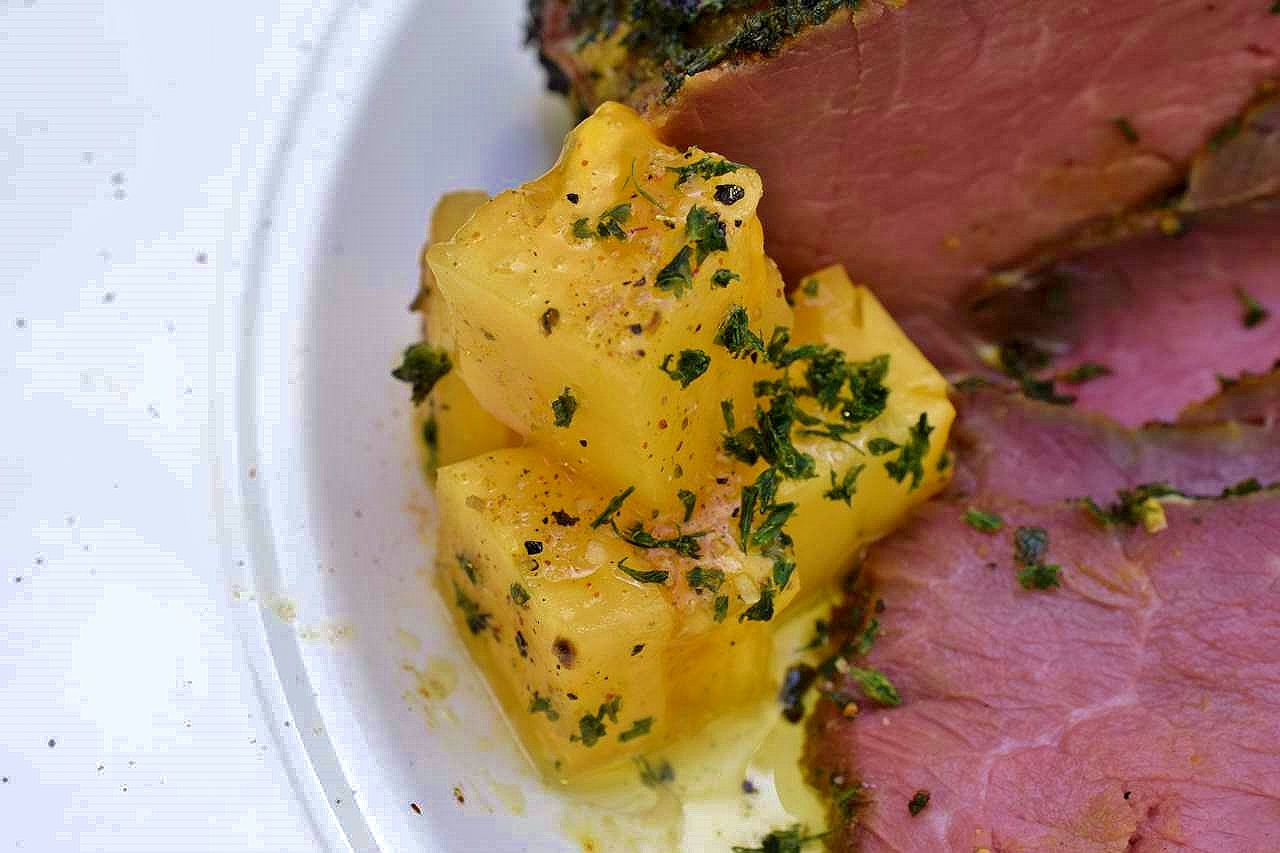
Something so simple as a sliced or cubed heirloom tomato can bring a lot of attitude and altitude to any presentation.
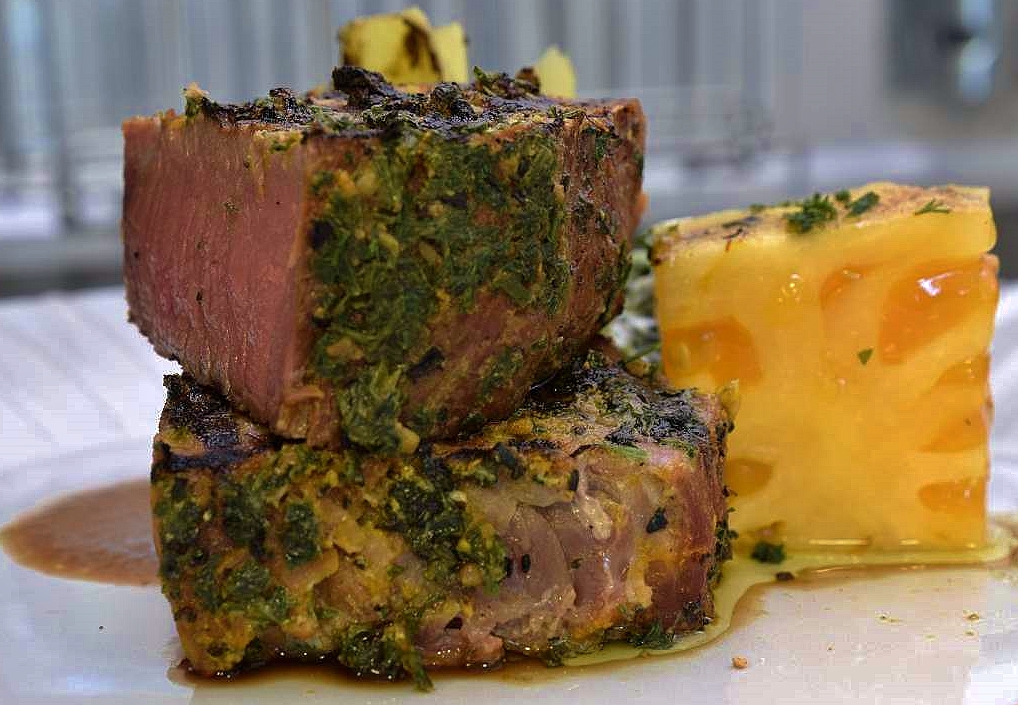
A blanched celery heart that is then char broiled evokes the sort of “mixed grill” feeling to the dish. See the method HERE.
Here’s another treatment of Top Sirloin Sous-B-Q that may interest you.
Norm King
Epilogue: Some like it cold…
There is no such thing as a leftover. If you don’t eat the whole roast at the first sitting, there is always tomorrow’s lunch, or even tonight’s late night snack…
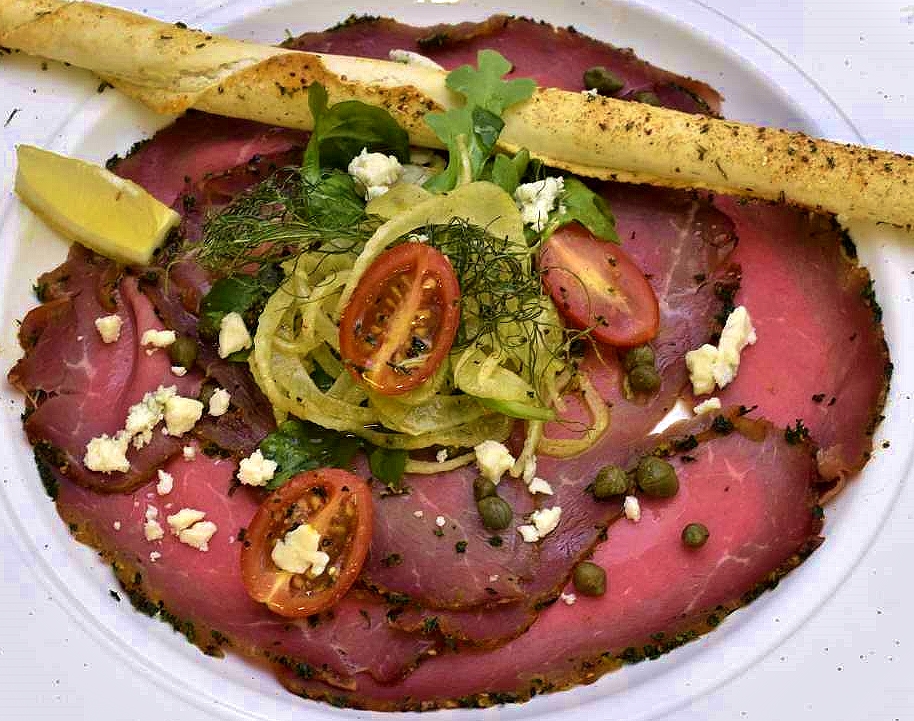
Carpaccio style, but with blue cheese instead of Reggiano, shaved fennel and a bread stick, or…

Bakers call this a snail, but most people think of snail pastry as a sort of Danish. Maybe we should call it a slug.
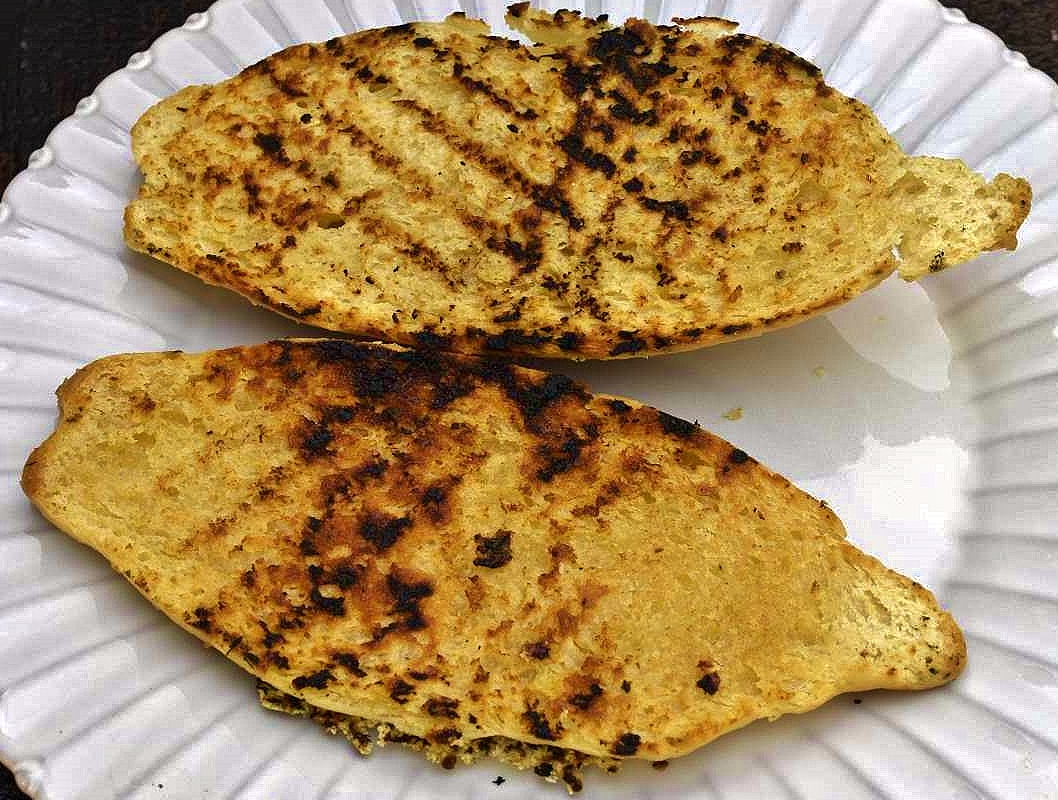
Split, buttered and grilled.
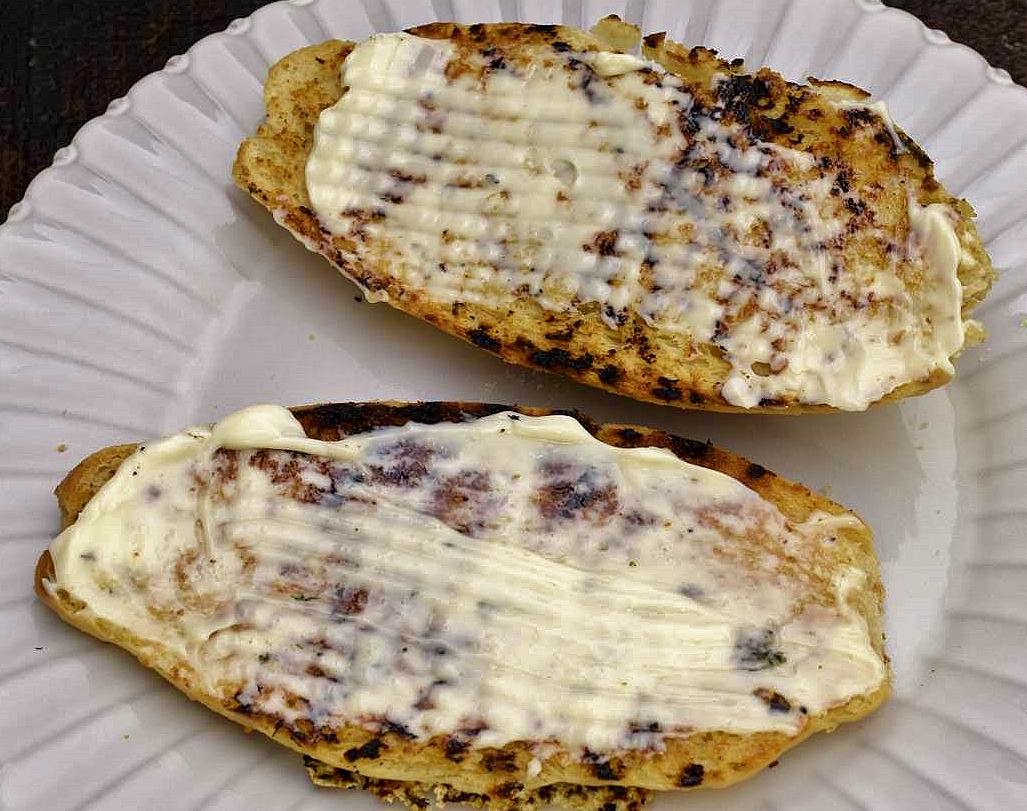
Mayo, my own little clinic.
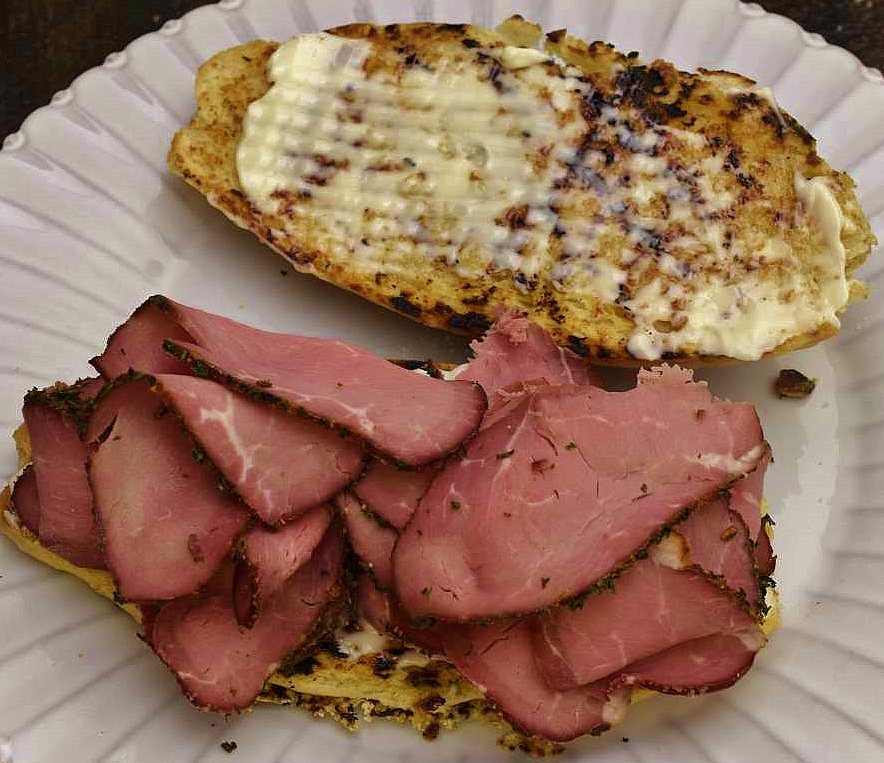
Meat.
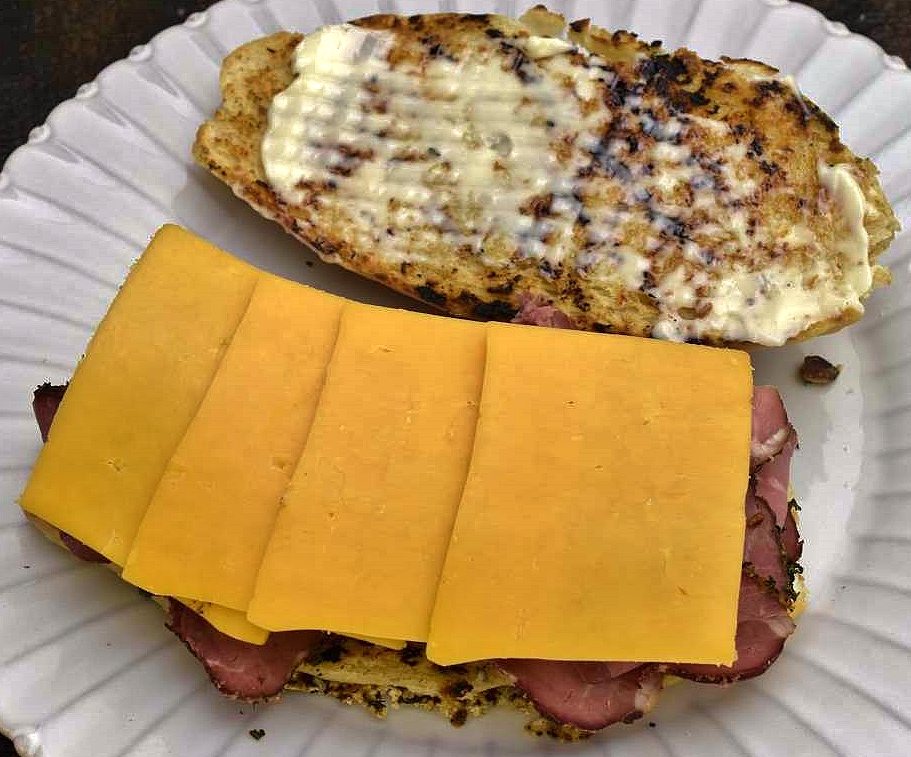
Cheddar.
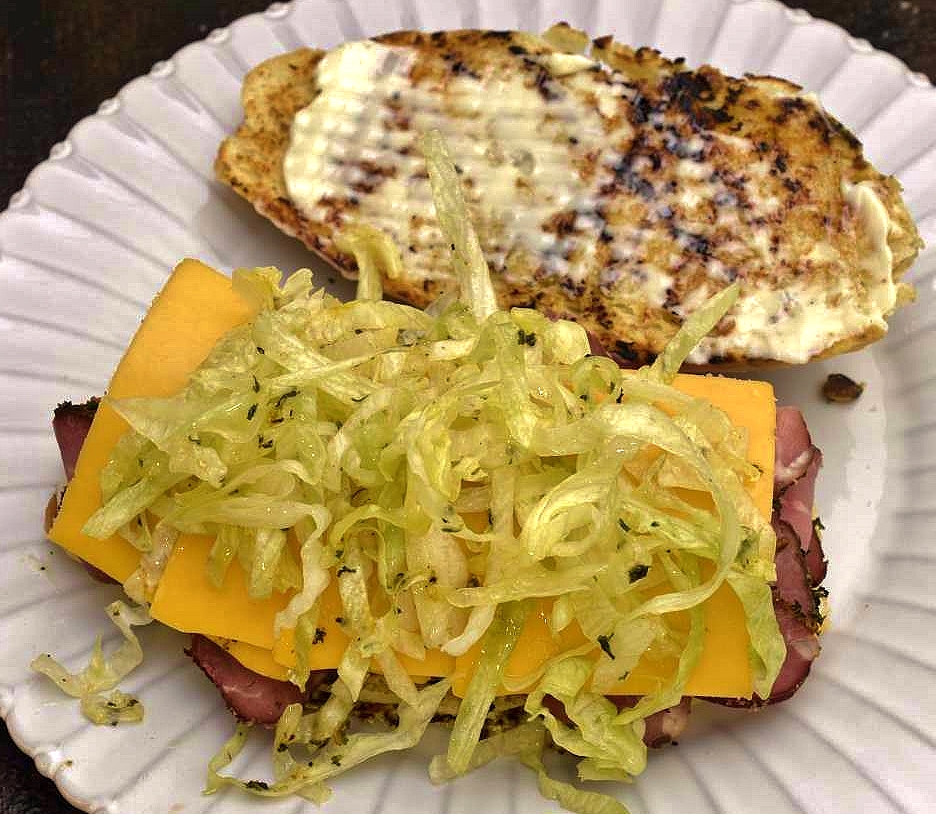
Shredded iceberg, seasoned and dressed, New Jersey Dry Dock style.
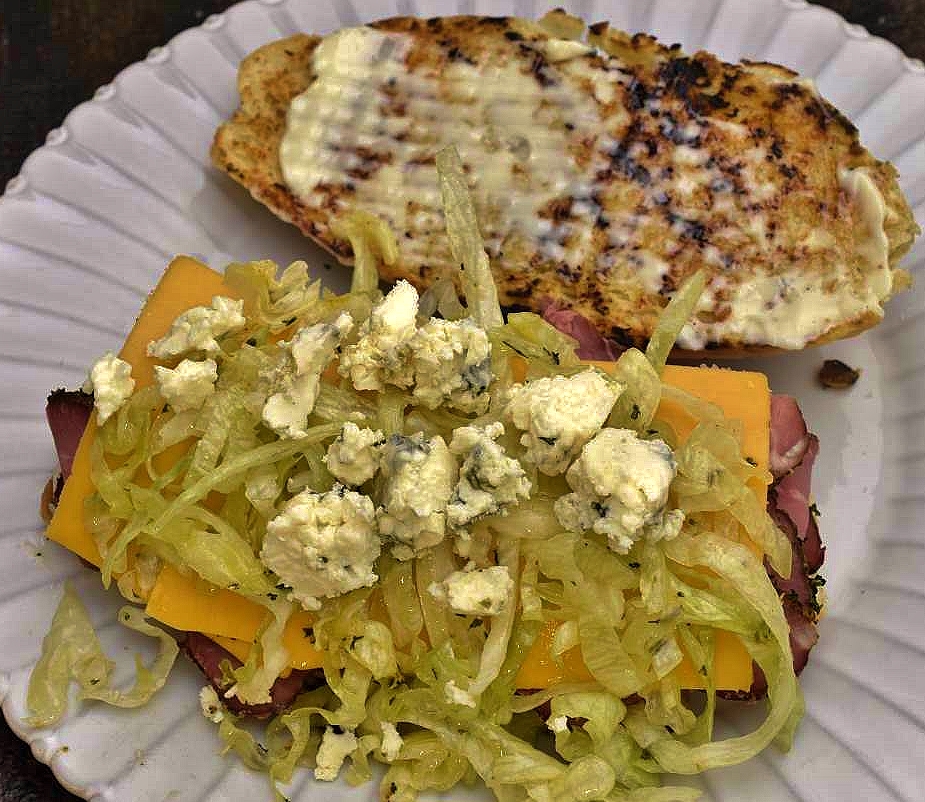
I bought a whole wheel of blue a while back.
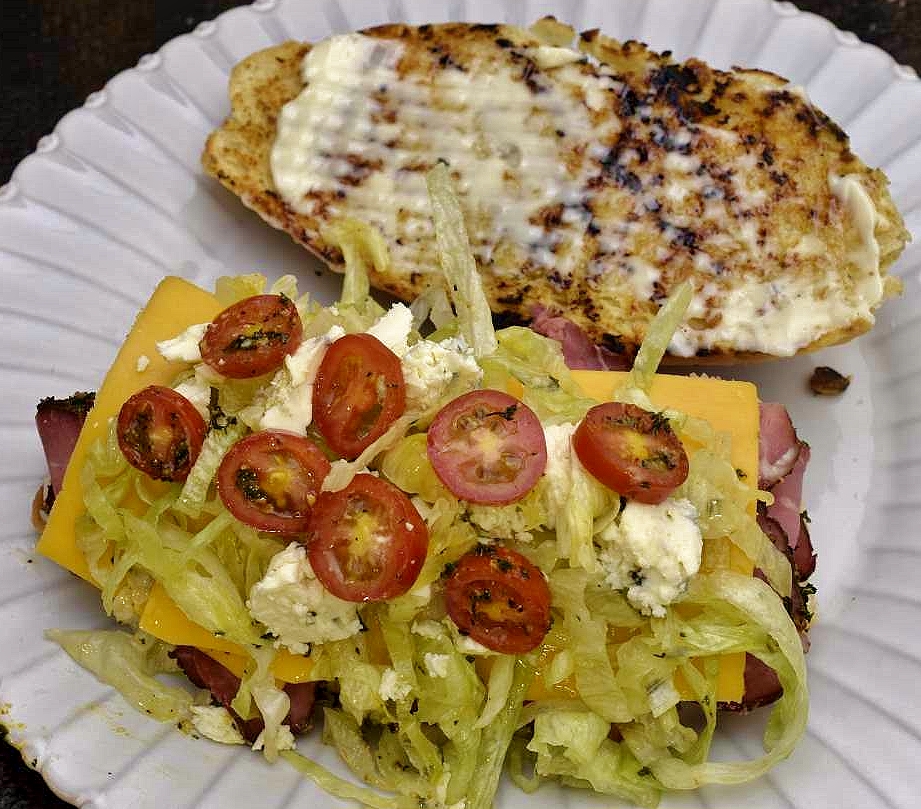
Yes, grape tomatoes can be sliced.
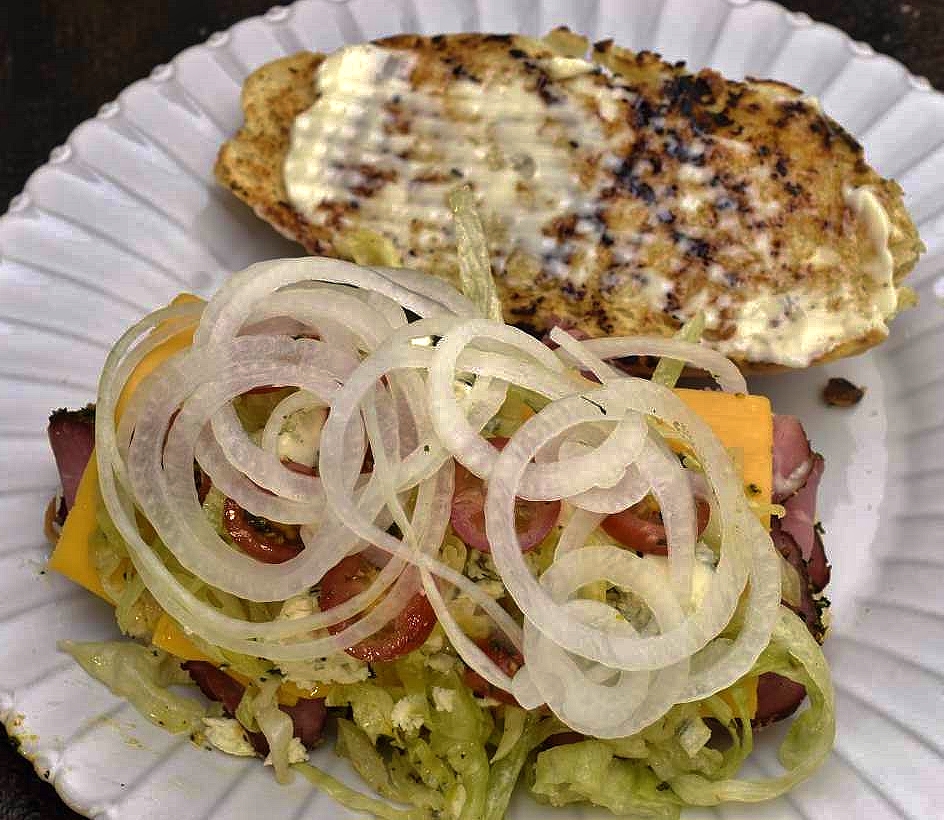
Machine sliced onions.
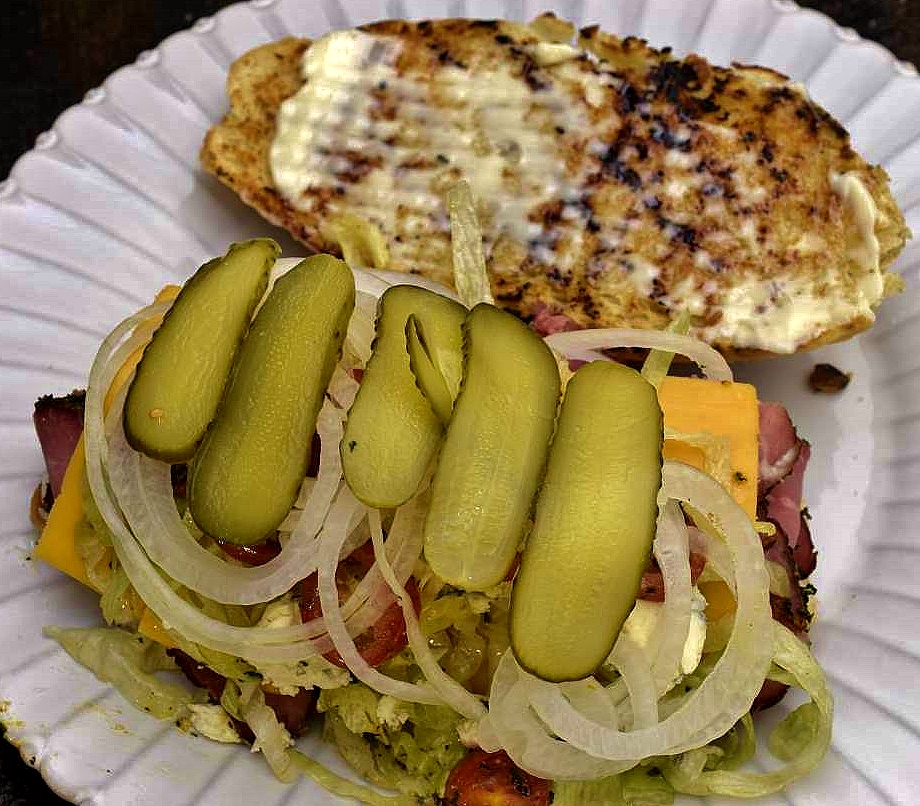
Hand sliced pickles, not really a big fan.
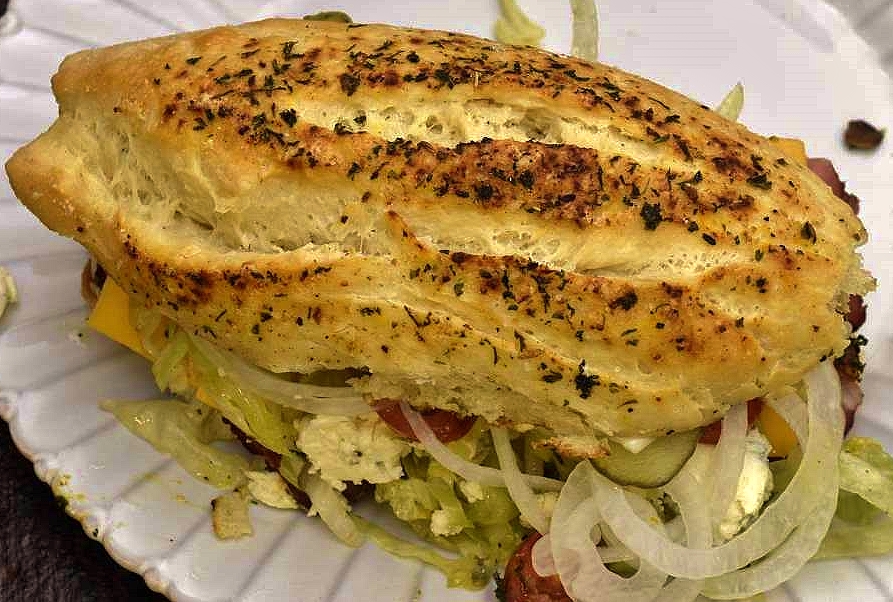
Put up the top on the convertible.
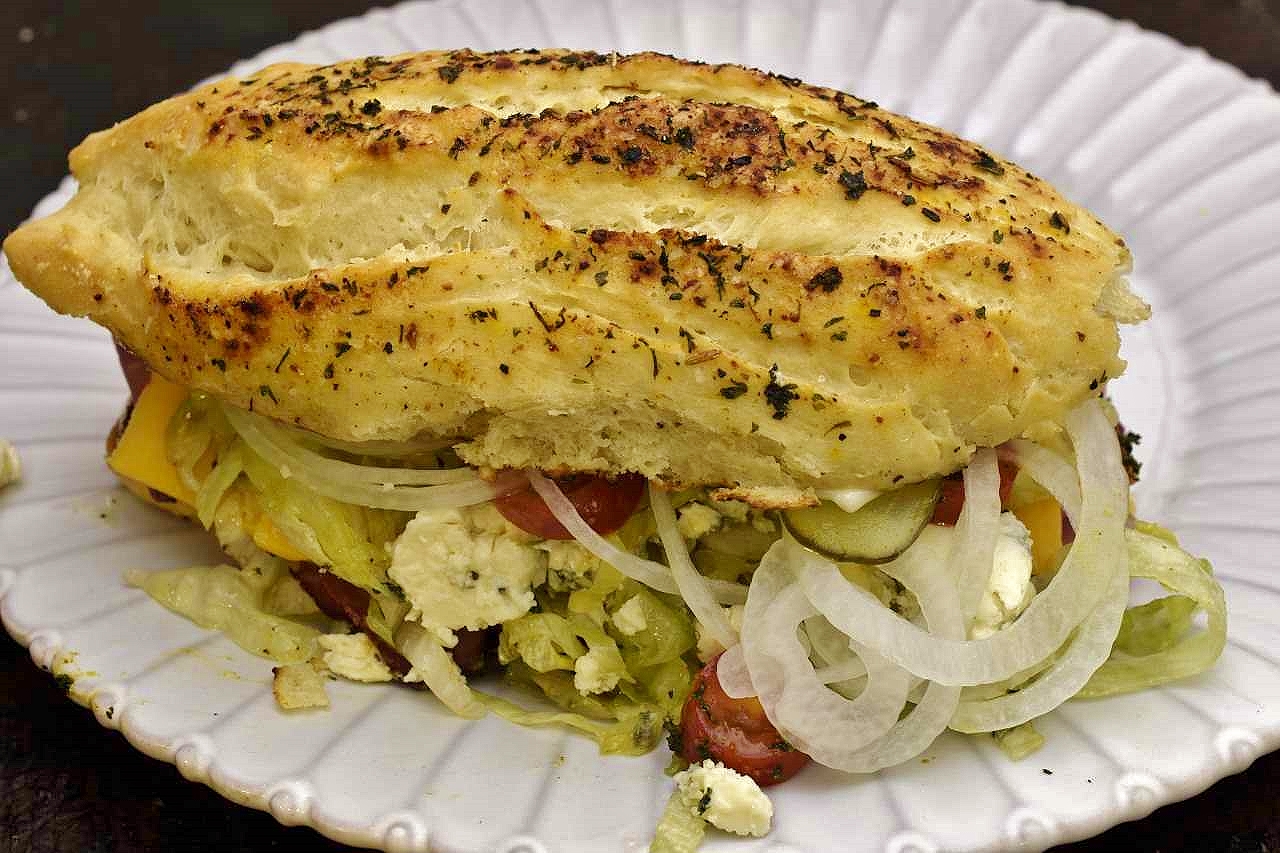
Altitude.
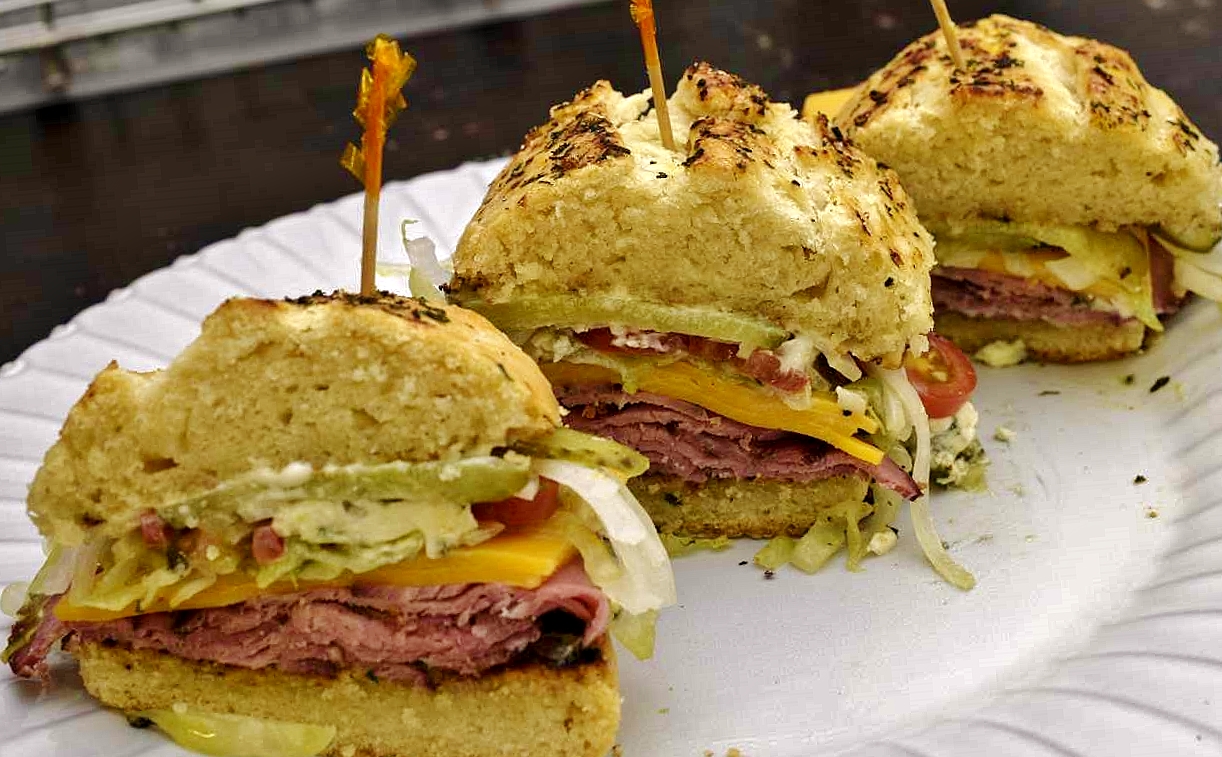
Picadors.
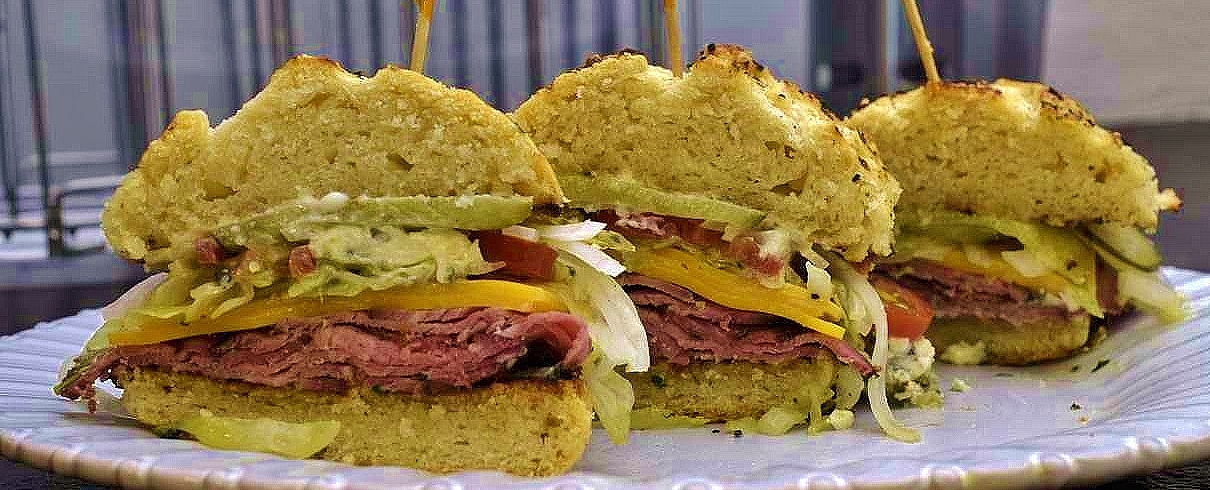
Profiles in courage.
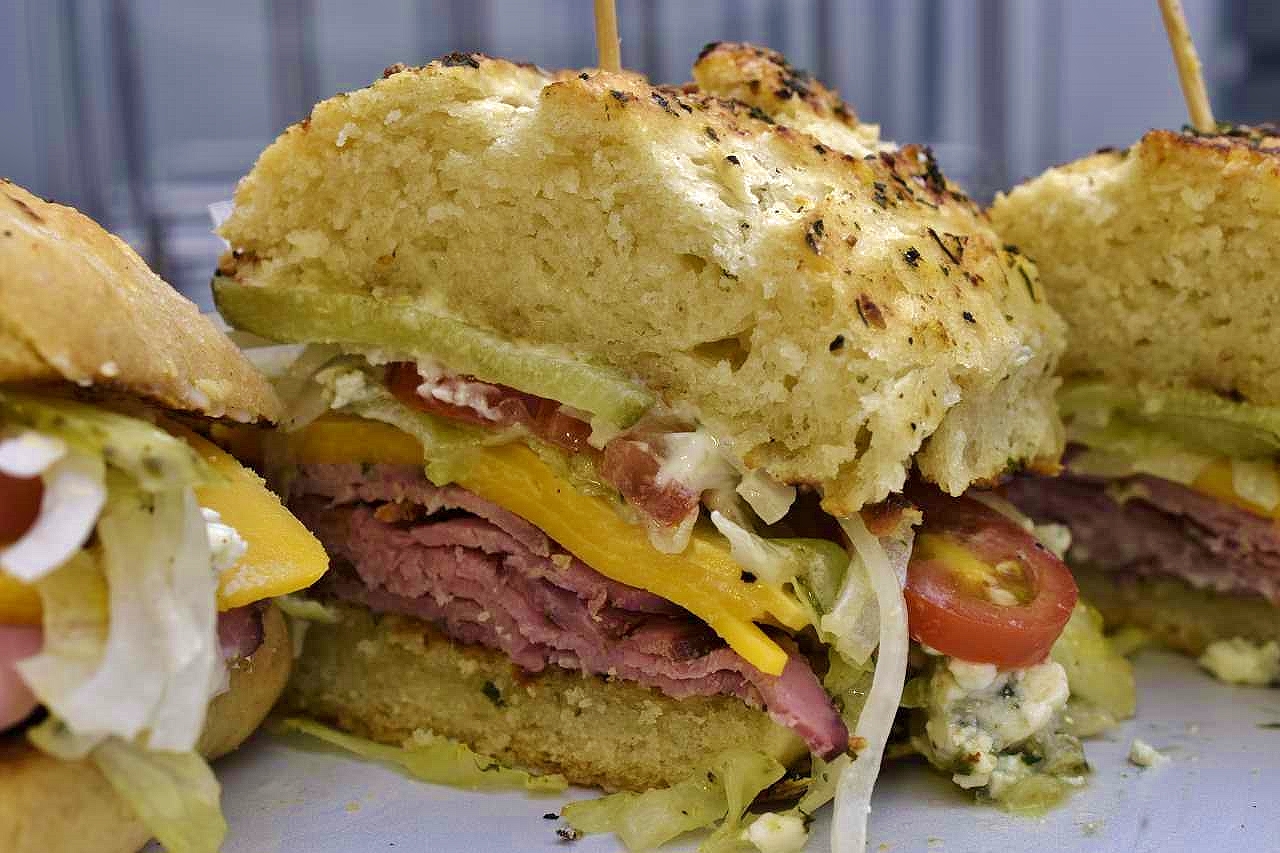
Yes, that’s Umami rub #12 and 35 sprinkled on the roll.

